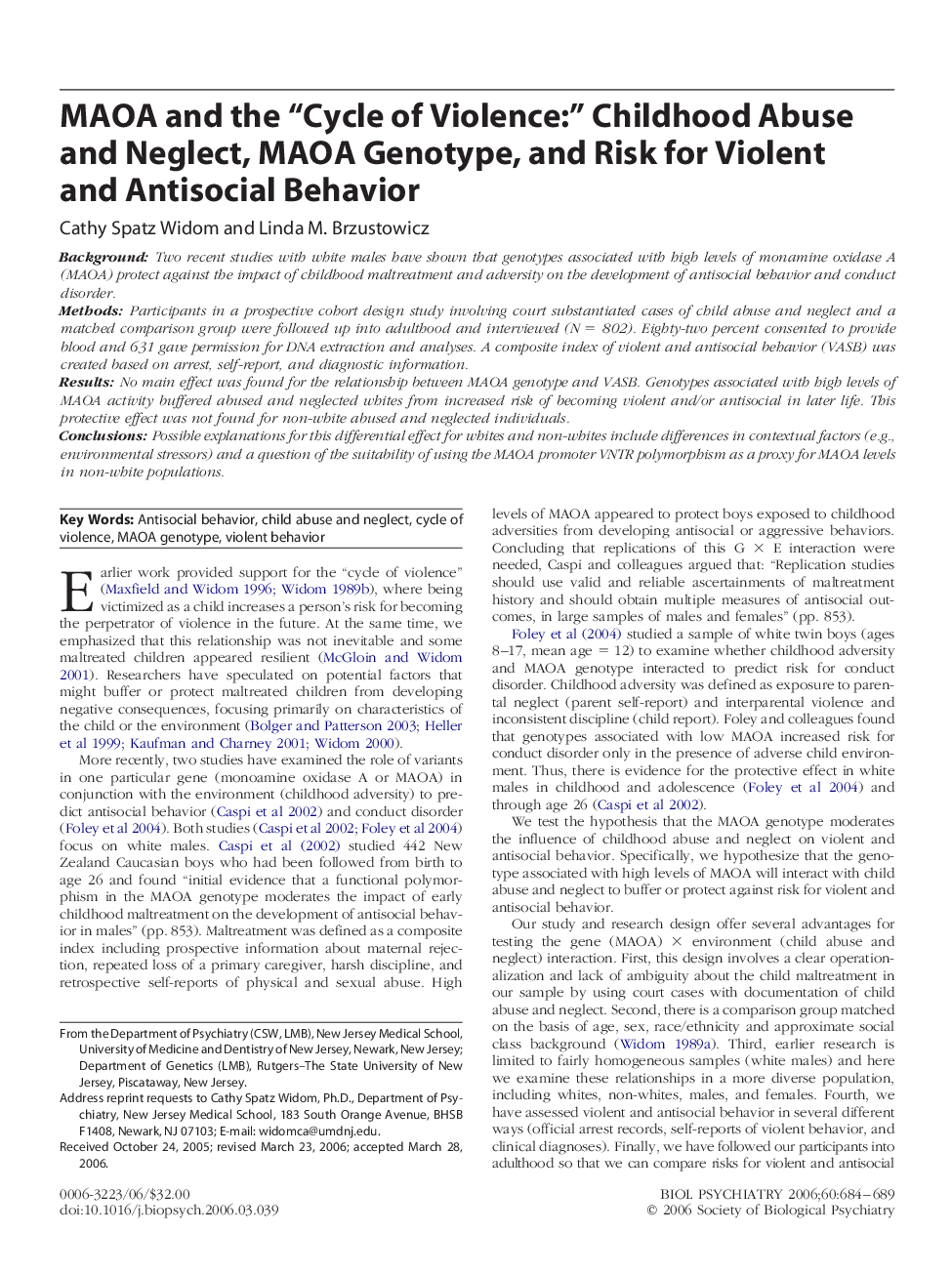| Article ID | Journal | Published Year | Pages | File Type |
|---|---|---|---|---|
| 4181222 | Biological Psychiatry | 2006 | 6 Pages |
BackgroundTwo recent studies with white males have shown that genotypes associated with high levels of monamine oxidase A (MAOA) protect against the impact of childhood maltreatment and adversity on the development of antisocial behavior and conduct disorder.MethodsParticipants in a prospective cohort design study involving court substantiated cases of child abuse and neglect and a matched comparison group were followed up into adulthood and interviewed (N = 802). Eighty-two percent consented to provide blood and 631 gave permission for DNA extraction and analyses. A composite index of violent and antisocial behavior (VASB) was created based on arrest, self-report, and diagnostic information.ResultsNo main effect was found for the relationship between MAOA genotype and VASB. Genotypes associated with high levels of MAOA activity buffered abused and neglected whites from increased risk of becoming violent and/or antisocial in later life. This protective effect was not found for non-white abused and neglected individuals.ConclusionsPossible explanations for this differential effect for whites and non-whites include differences in contextual factors (e.g., environmental stressors) and a question of the suitability of using the MAOA promoter VNTR polymorphism as a proxy for MAOA levels in non-white populations.
